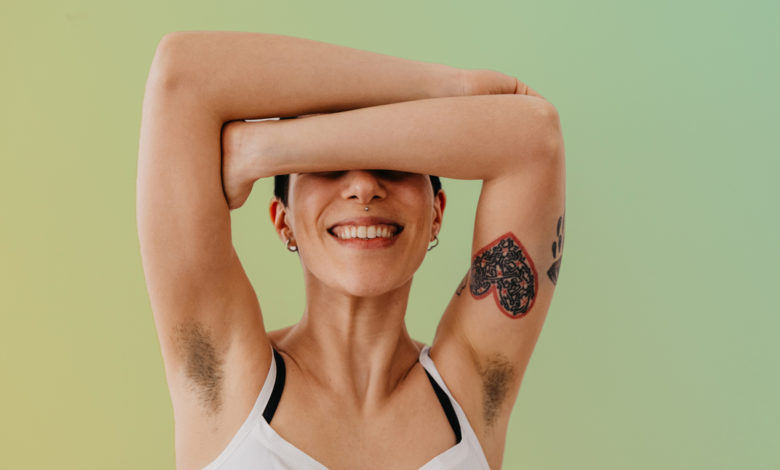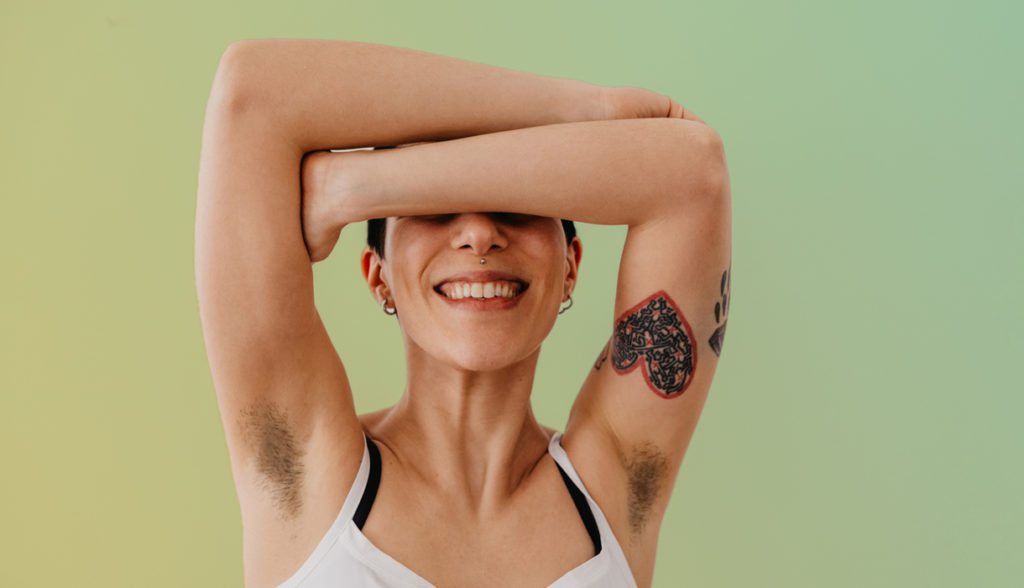
Loving Your Queer Body
Ditch the toxic societal norms on your journey to self-acceptance.

With the coming of each new year, we make countless pledges to radically shift our behaviors regarding diet and exercise. From “Dry January” to the enticing deals on new gym memberships and workout equipment, we are bombarded with messaging about the best way to get in shape for the new year.
On one hand, this is not an entirely bad thing. Proper nutrition, exercise, and adequate sleep are widely recognized as important parts of our mental-health and wellness practices.
And while there’s nothing wrong with examining our lifestyles and making changes to improve our health, it is just as important to better understand and develop a relationship with our inner selves that promotes self-acceptance, regardless of our size and shape.
Queer Body-Shaming
We all know “the rules.” Gay men are supposed to be not only fit, but ripped and masculine. Lesbians should be thin and not too butch. For trans folks, there is pressure to conform to society’s rigid male-female binary, coupled with a destructive hyper-focus on transitioning.
To make things worse, these rules seem to apply only to young and able-bodied LGBTQ folks. Those living with a disability (or who are past a certain age) experience a kind of erasure from the sociocultural landscape. Ageism and ableism both stem, in part, from our deep-seated fears about the body’s physical limitations and mortality. We actively avoid being reminded of these limitations by avoiding people who are living with them.
Unfortunately, this toxic LGBTQ focus on the body is not new. It represents a very specific way in which patriarchal norms and societal expectations negatively impact self-acceptance among queer folks. Understanding the origins of this toxic focus can help us break these patterns of thinking.
Fitting In to Survive
For many, the pressure to become hyper-focused on the body and gender expression began during early childhood. It may have been important to adhere to rigid, stereotypical ideas about masculinity or femininity. Perhaps it was necessary to look and behave a certain way at school or with our families in order to avoid being labeled “queer.” Presenting ourselves in a particular manner could reduce the likelihood of being targeted and bullied, and ensure that friends and caregivers would remain supportive.
Other early struggles with our queer identities may have resulted in trying to overcompensate by developing an obsession with perfection, achievement, and appearance. When our financial livelihood depends on appearing heterosexual or gender-conforming, we may naturally present in a manner that ‘reads’ as straight.
The ‘Perfect’ Body
It is important to acknowledge that we live in a world that overtly defines the ‘right’ kind of body as one that is white, thin, and fit. Queer folks, who are more likely to have a heightened focus on the body, are especially susceptible to this message. As a result, LGBTQ individuals may be more vulnerable to negative thinking about the body, or develop an inability to see or experience their bodies favorably. LGBTQ youth are especially vulnerable, as evidenced by the increase in eating disorders among youth—and across the entire sexual and gender spectrum in the age of COVID.
A recent study found that roughly one-third of gay men report body dissatisfaction, compared to just 24 percent of cis-het men. (But 38 percent of cis-het women report body dissatisfaction, the highest percentage of any group.)
While this research shows few differences in body dissatisfaction among all women, regardless of sexual orientation, lesbians had slightly less concern about their bodies during sexual activity. Recent studies also suggest higher rates of body-weight dissatisfaction among bisexual women. Ultimately, the extent to which an individual feels subject to the male gaze may be a factor in determining body satisfaction.
There is also a racialized component to our collective body obsession. Thin, white, and non-disabled bodies are almost universally represented as the standard in society and the media. This bias extends beyond outward appearance to include our understanding of what constitutes optimal physical health.
For example, the Body Mass Index (BMI) is a measure of body fat based on height and weight, and serves as a means of predicting our risk for developing all kinds of illnesses, including life-threatening conditions such as diabetes or hypertension. Importantly, medical constructs such as BMI have recently come under fire for their roots in prejudice and racism, since the original BMI research failed to include a full cross-section of body types in order to justify racism and misogyny.
The take-home message is this: in the same way that entire communities can be marginalized, our bodies can also be marginalized, particularly if they do not adhere to rigid standards that are rooted in racism, misogyny, and ableism. Stepping away from these constructs and challenging them is an important part of LGBTQ activism.
A 2022 Good-Health Resolution
People everywhere are struggling with self-acceptance, thanks to the destructive encoded messages we hear regarding our attractiveness and our health practices. But perhaps the message we’re not hearing is that the work of taking care of our bodies begins on the inside.
This year, work on creating goals that focus on your overall health, rather than just getting your weight down to a certain number or developing a certain part of your body. Question the notion that you’ll be happier by simply becoming slimmer.
It is so easy to pick out your imperfections—a crooked nose, a gap-toothed smile, or love handles. Can you learn to love those things, rather than simply live with, tolerate, or accept them? What would it look like to radically accept yourself? Extending self-love to include the love and acceptance of your body is a powerful and radical act.
Practicing affirmation and gratitude can be powerful tools in jumpstarting your path to body positivity. Erasing old tapes about body expectations and rewiring your thinking (by literally creating new neural pathways) can be the key to self-acceptance. In the same way we learn new skills or behaviors at work or around the house, we have the capacity to learn new ways of thinking about ourselves.
Perhaps instead of focusing on restrictive dieting behaviors or impractical exercise and workout goals in the new year, you could try exercising the mental muscles that lead to radical self-acceptance.
This article appears in the January 2022 edition of OutSmart magazine.










